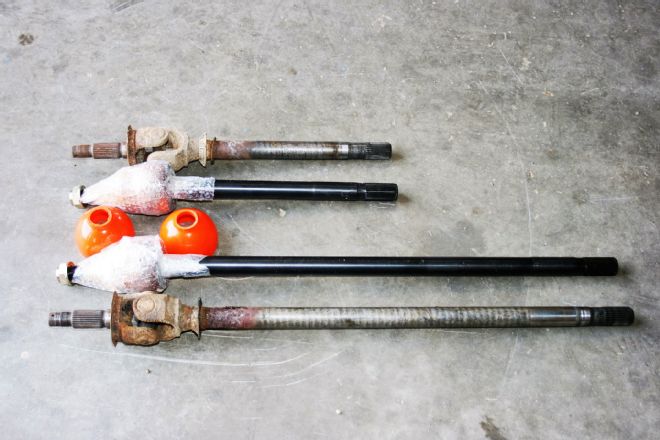
Once we had 35-inch tires on our ’05 LJ (with future plans to possibly go with bigger rubber one day), it was a no-brainer that the Jeep’s ring-and-pinion gears, axles, and axleshafts should be beefed up to handle the increased bite and weight of the tires.
Large, high-traction tires can break or twist OEM axleshafts, and having used RCV Performance axles for two previous Jeep builds, we knew that was a safe bet. So we looked into the company’s front axle set with CV joints instead of U-joints. Not only are CVs smoother when at full-lock turns, they are far stronger than similarly sized U-joints. Alloy USA uses the latest cold-rolled splining technology to produce splines that are stronger than those that are traditionally cut. The Alloy USA rear axleshafts also come with a 10-year warranty.
When it came to the gear sets and differential rebuild kits for the front and rear, we chose Yukon Gear and Axle. All the parts needed to get the job done are included. The Yukon master kits will ensure exacting fit and hassle-free installation with top-notch components such as Timken bearings. Assembling gear sets properly is not for the inexperienced mechanic, nor for the experienced tech without the proper tools. If you’re even the slightest but nervous about this operation, farm it out to an expert. A little extra cost can keep you four-wheeling instead of sitting by the road weighting for a tow truck.
Choosing the right ratio gears was a breeze because we used the gear comparison calculator on Summit Racing’s website (summitracing.com). We used a gear set that would keep the engine speed the same or slightly higher than it was with the stock gear/tire combination at the same road speed. With the Yokohama Geolander M/T’s 35-inch diameter, we determined that 4.56:1 gear ratios would give us an engine speed of a few hundred rpm above the stock gear/tire combo.
With the 4-inch lift we installed in Part 1 (Feb. ’15), we also needed a longer rear driveshaft. The front driveshaft didn’t need to be replaced because it was a double Cardin-style CV joint, while the rear had a slip-yoke/U-joint design. We contacted Powertrain Industries for an upgraded rear driveshaft: a 1310 double Cardin-style CV (constant velocity) driveshaft. Although somewhat light-duty compared to the 1350 series normally seen on pickup trucks, the 1310 is plenty strong for our application, and Powertrain’s design is old school with the slip joint on the differential end.
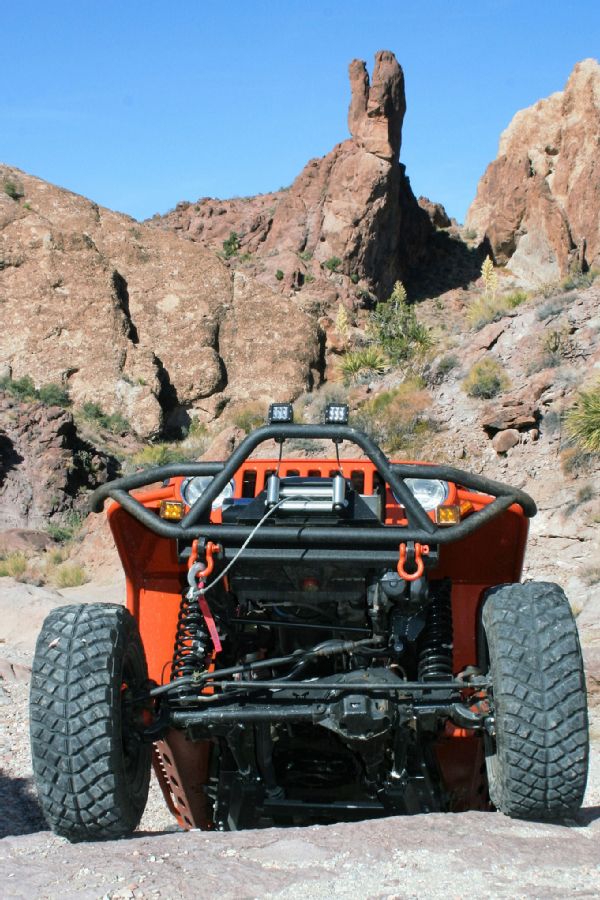 Climbing a 6-foot, near-vertical waterfall requires traction and power. A set of Yokohama Geolander M/T 35x12.50-17 tires on Raceline steel beadlock wheels from Summit Racing also help.
Climbing a 6-foot, near-vertical waterfall requires traction and power. A set of Yokohama Geolander M/T 35x12.50-17 tires on Raceline steel beadlock wheels from Summit Racing also help.
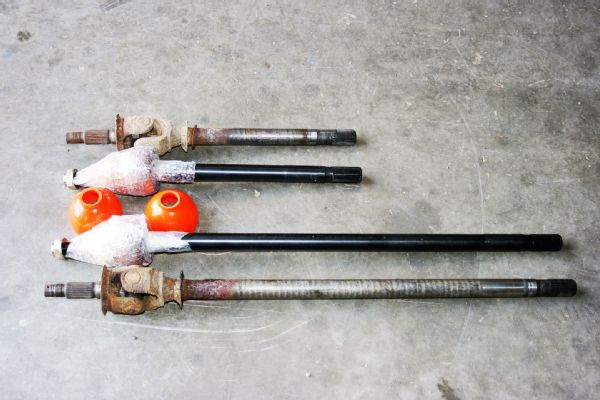 The addition of RCV axles makes the front end almost invincible. Large ball bearings are the heart of the constant velocity front axle joint. The RCV Dana 44 axle kit comes complete and ready to install, including a tube of special-compound axle grease to fill the CV joints just before installation (and to keep filled during the annual follow-up maintenance schedule).
The addition of RCV axles makes the front end almost invincible. Large ball bearings are the heart of the constant velocity front axle joint. The RCV Dana 44 axle kit comes complete and ready to install, including a tube of special-compound axle grease to fill the CV joints just before installation (and to keep filled during the annual follow-up maintenance schedule).
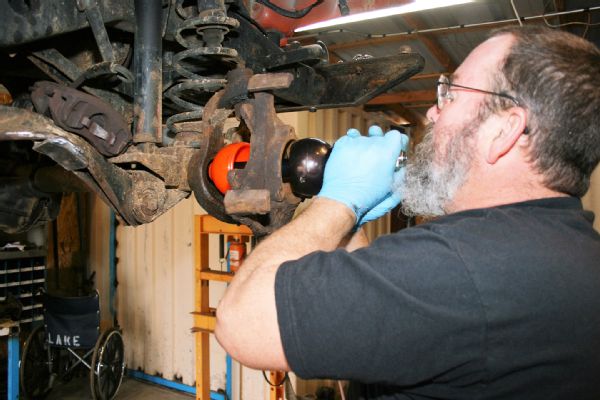 On some axles, the orange grease cup can be installed on the axleshaft before it is inserted. On others, it must be in place before the ’shaft is inserted into the housing.
On some axles, the orange grease cup can be installed on the axleshaft before it is inserted. On others, it must be in place before the ’shaft is inserted into the housing.
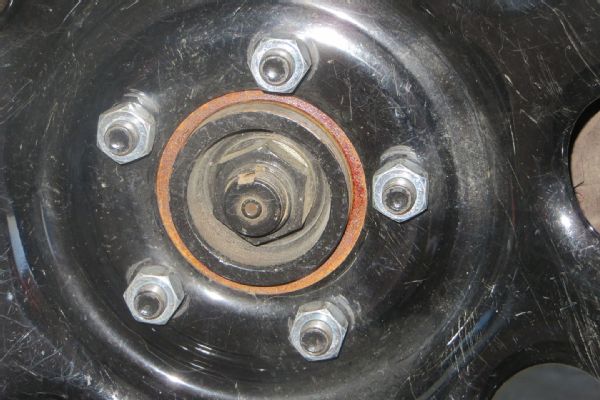 Even though it needs cleaning, this aperture allows you to grease the CV joint annually without dismantling the front axle. You may need RCV’s Needle Grease Tip (PN 100-24) to shoot the grease into the axle’s ends.
Even though it needs cleaning, this aperture allows you to grease the CV joint annually without dismantling the front axle. You may need RCV’s Needle Grease Tip (PN 100-24) to shoot the grease into the axle’s ends.
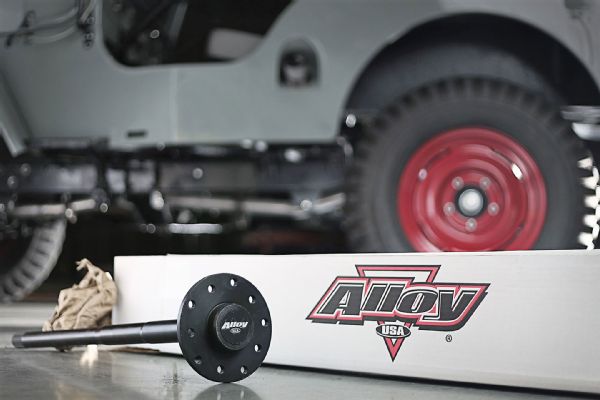 As you can see from all the lug boltholes, this Alloy chromoly axle has more than one application. These high-tensile 4340 chromoly rear axleshafts are heat-treated and induction-hardened and take advantage of the latest cold spline manufacturing technology.
As you can see from all the lug boltholes, this Alloy chromoly axle has more than one application. These high-tensile 4340 chromoly rear axleshafts are heat-treated and induction-hardened and take advantage of the latest cold spline manufacturing technology.
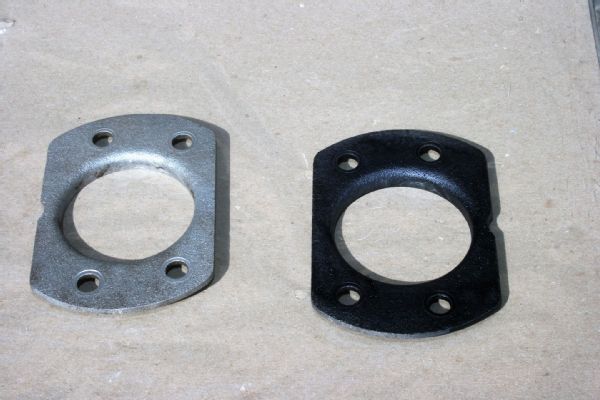 The axle mounting plate on the left has been sand blasted only. The plate on the right was sand blasted and then sprayed with Klean Strip Rust Converter. It’s now ready to finish painting.
The axle mounting plate on the left has been sand blasted only. The plate on the right was sand blasted and then sprayed with Klean Strip Rust Converter. It’s now ready to finish painting.
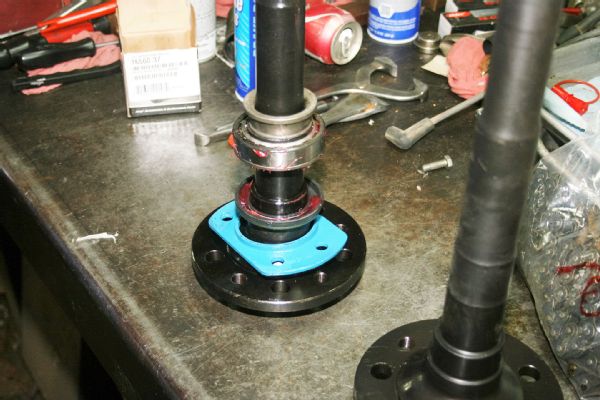 The plate was painted and then slipped onto the axle before the bearings were pressed on.
The plate was painted and then slipped onto the axle before the bearings were pressed on.
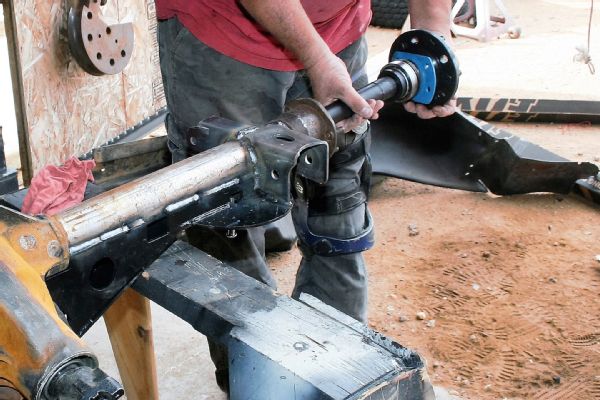 Slip the axle into the housing carefully so that the splines aren’t damaged. The ’shaft may have to be jockeyed back forth so the splines will mate with the gears.
Slip the axle into the housing carefully so that the splines aren’t damaged. The ’shaft may have to be jockeyed back forth so the splines will mate with the gears.
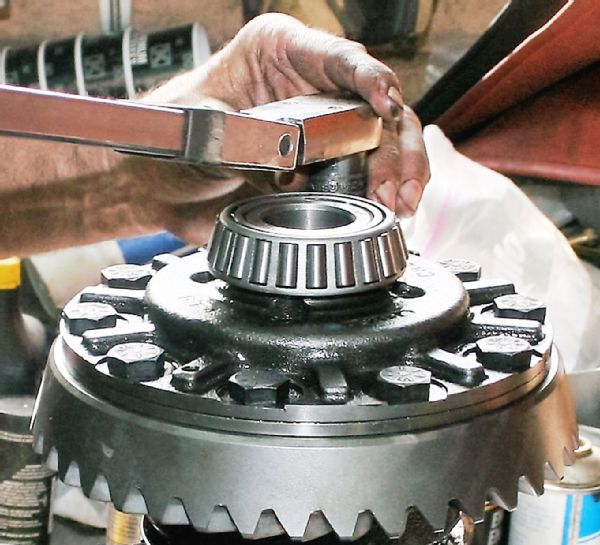 The carrier, ring, pinion, side gears, and bearings must be assembled properly. Then the carrier must be torqued to the ring gear according to the manufacturer’s specification.
The carrier, ring, pinion, side gears, and bearings must be assembled properly. Then the carrier must be torqued to the ring gear according to the manufacturer’s specification.
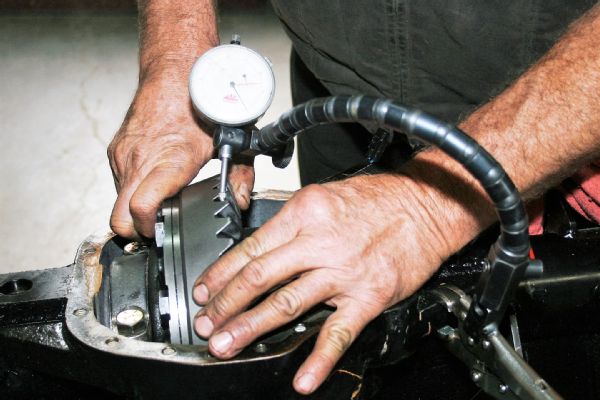 The pinion gear must be meshed with the ring gear to the proper depth and backlash. Unless you have all of the proper equipment for this extremely important task, we advise you allow an expert mechanic perform this step for you.
The pinion gear must be meshed with the ring gear to the proper depth and backlash. Unless you have all of the proper equipment for this extremely important task, we advise you allow an expert mechanic perform this step for you.
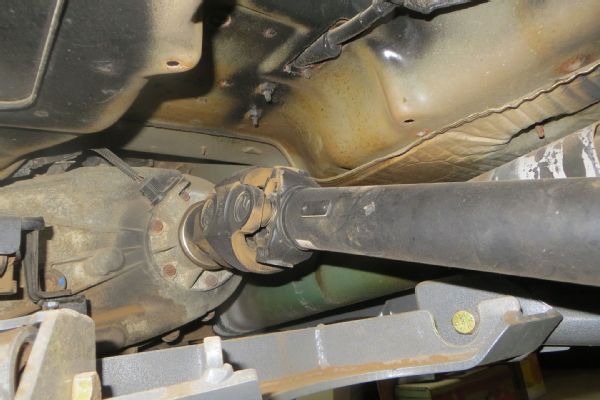 Powertrain’s new driveshaft includes a slip-yoke eliminator kit, with a new yoke to attach to the transfer case.
Powertrain’s new driveshaft includes a slip-yoke eliminator kit, with a new yoke to attach to the transfer case.